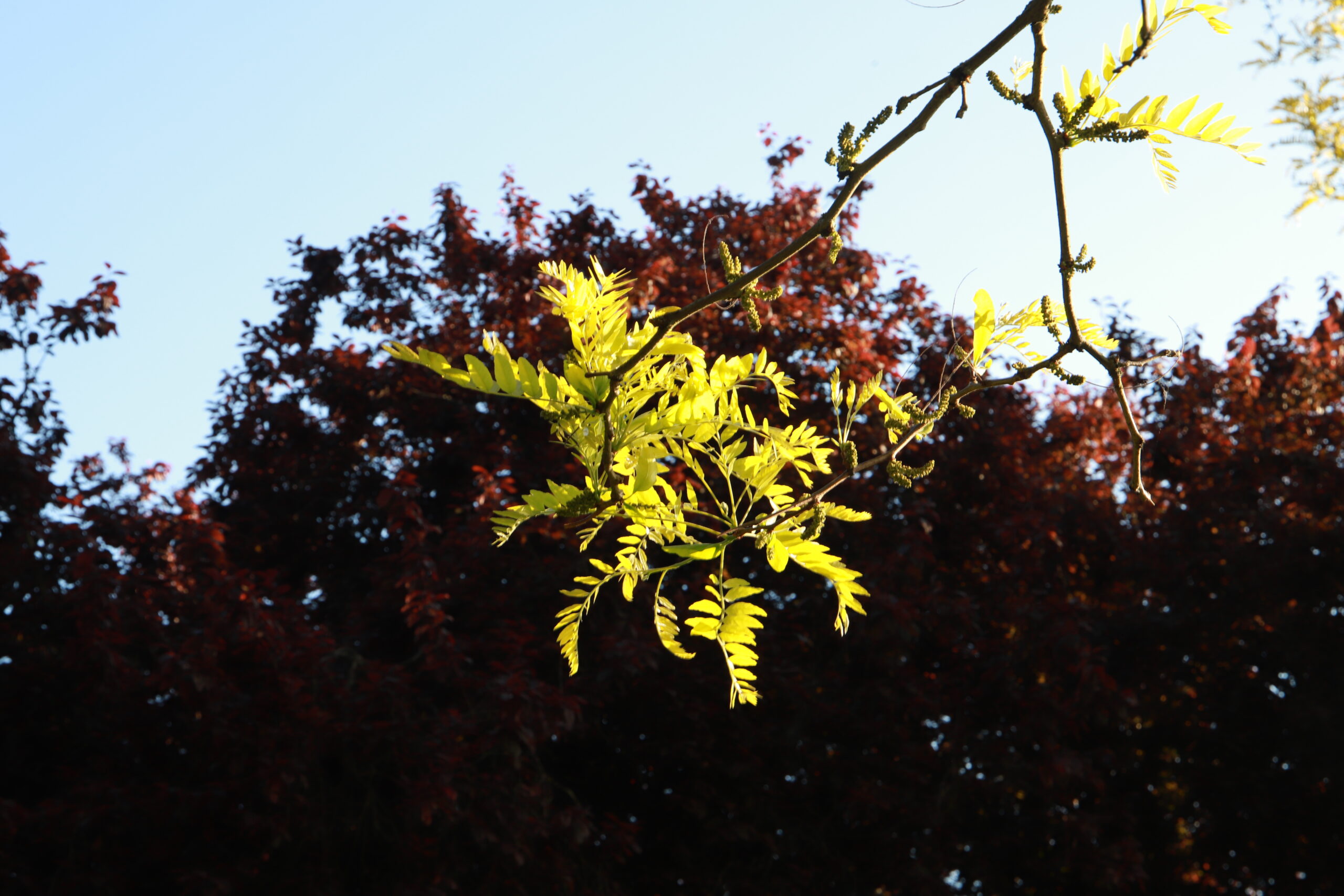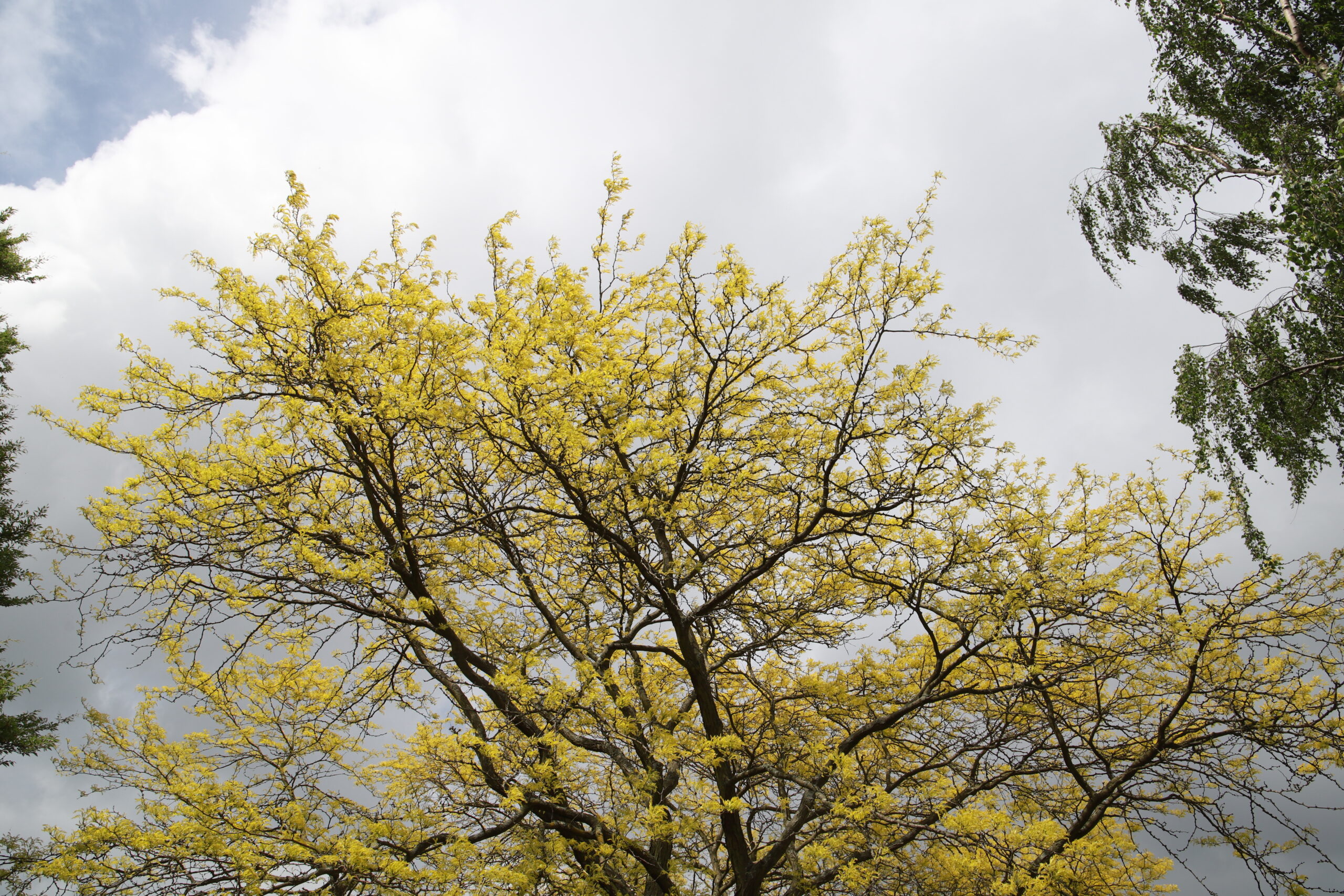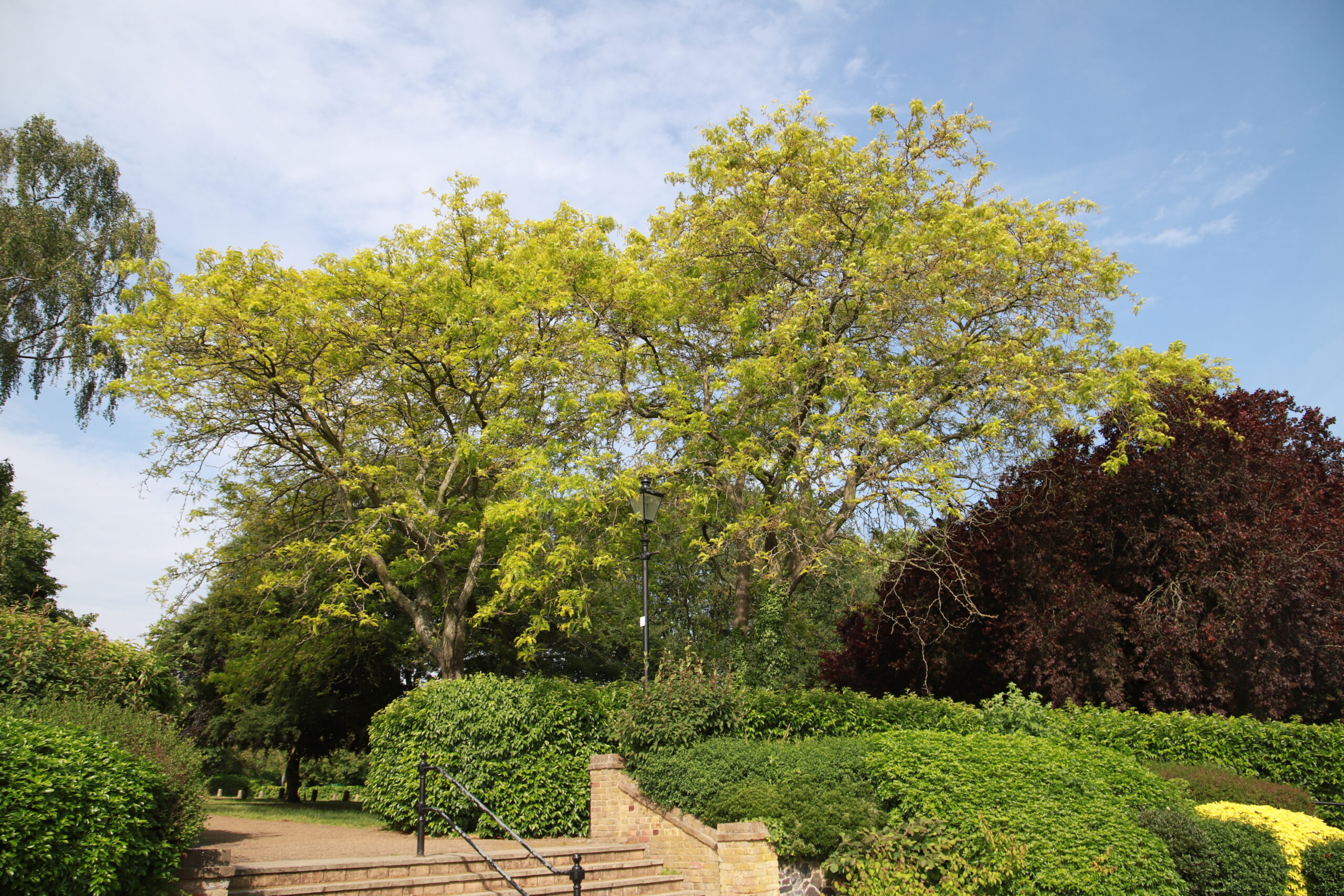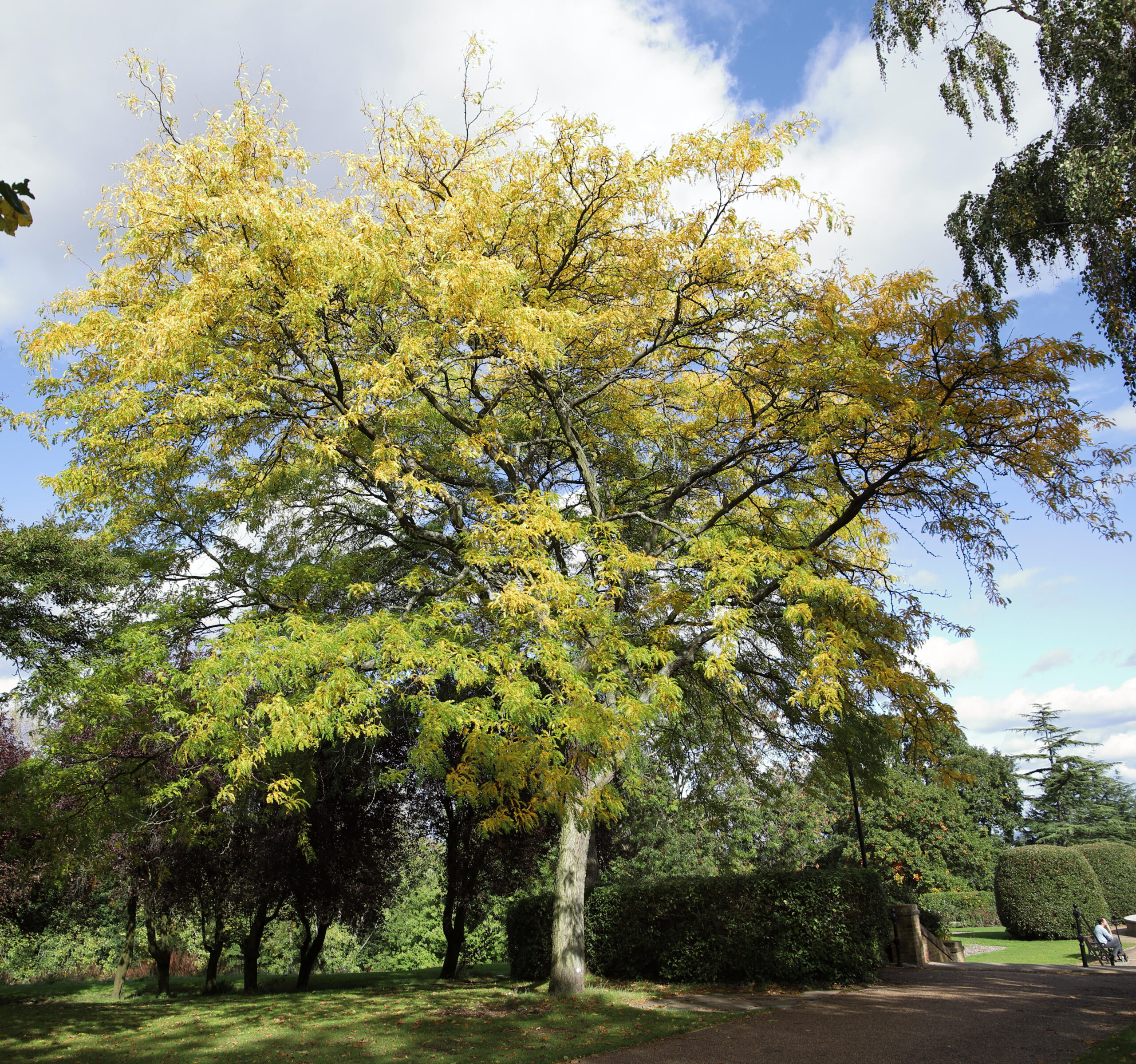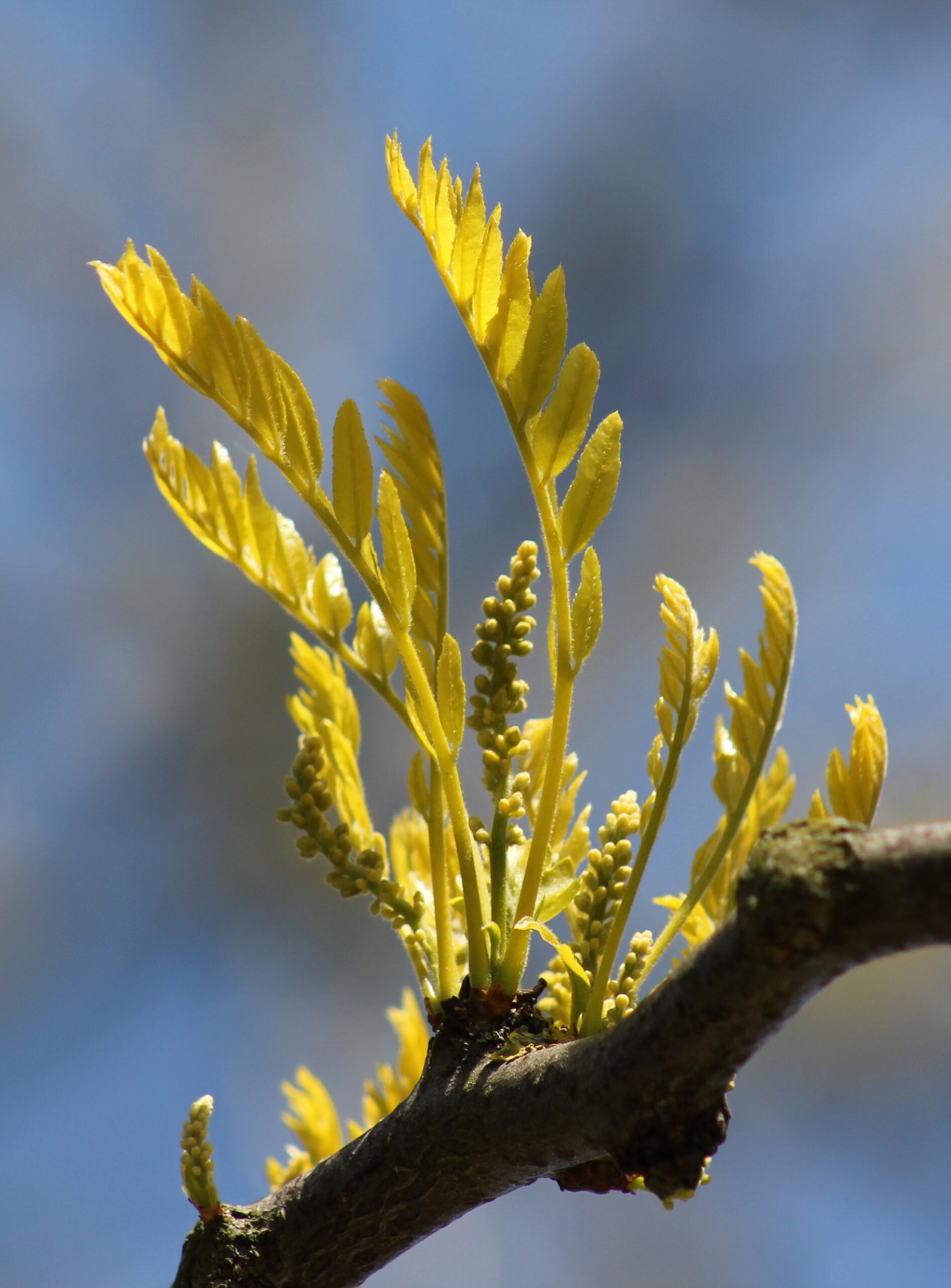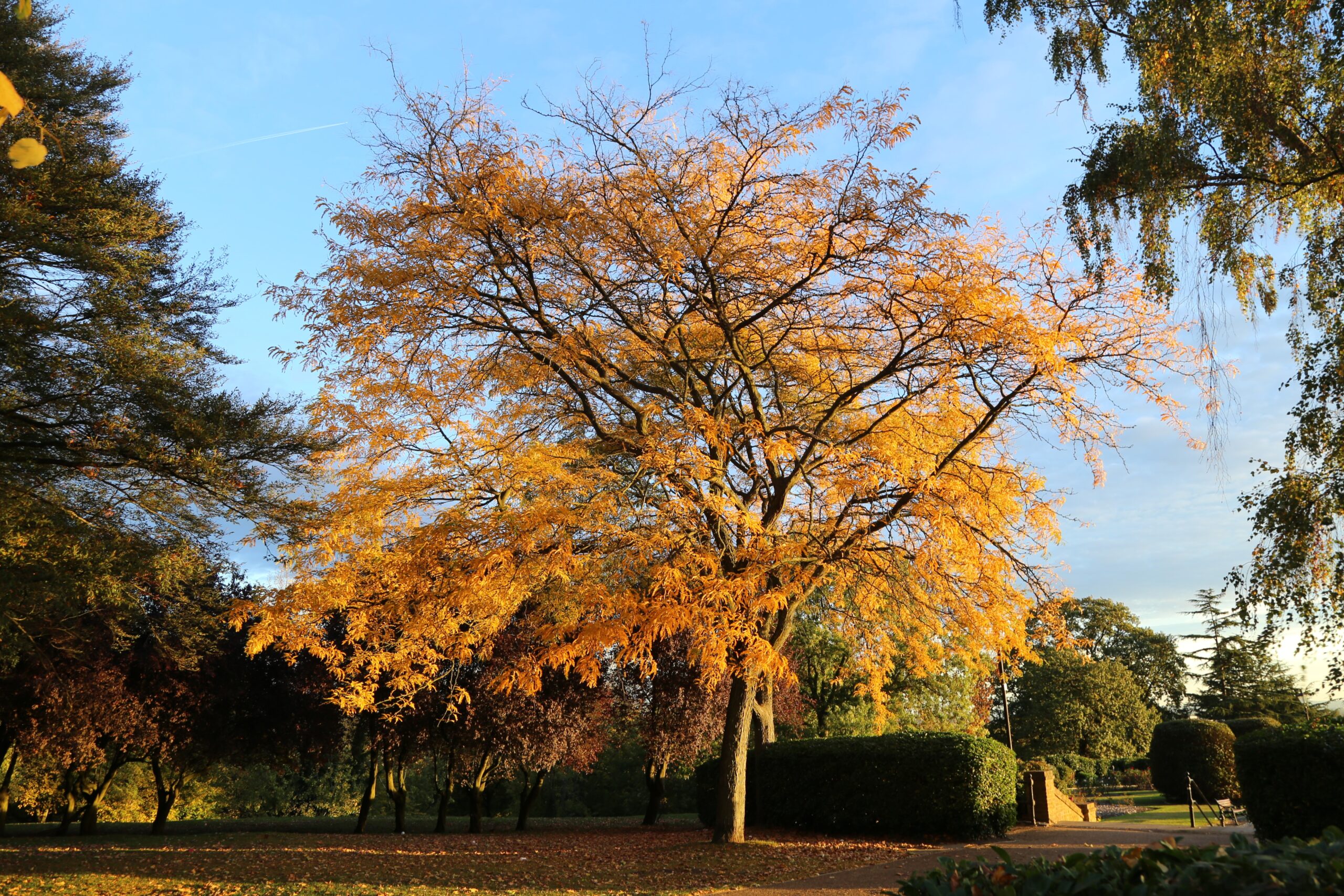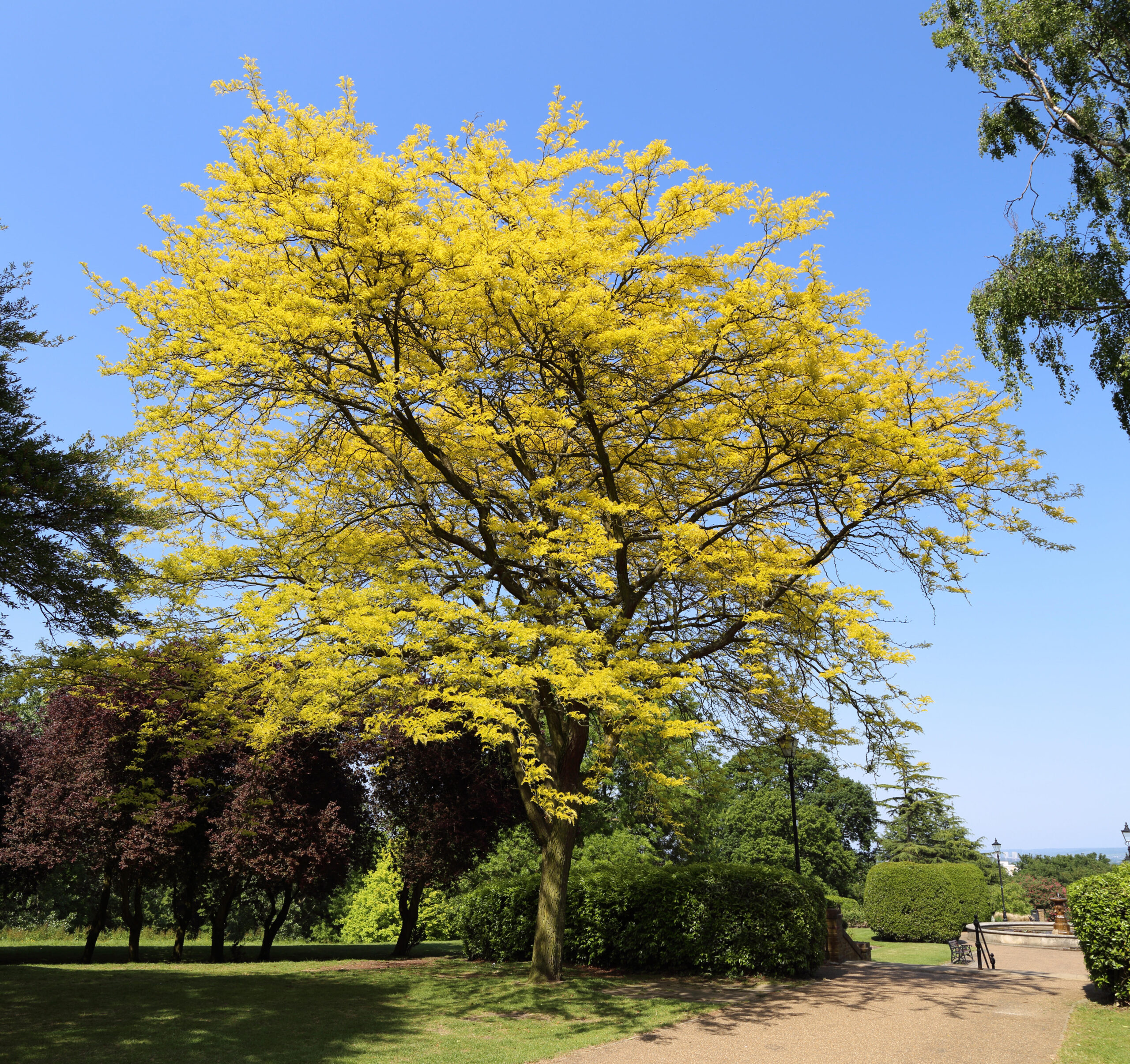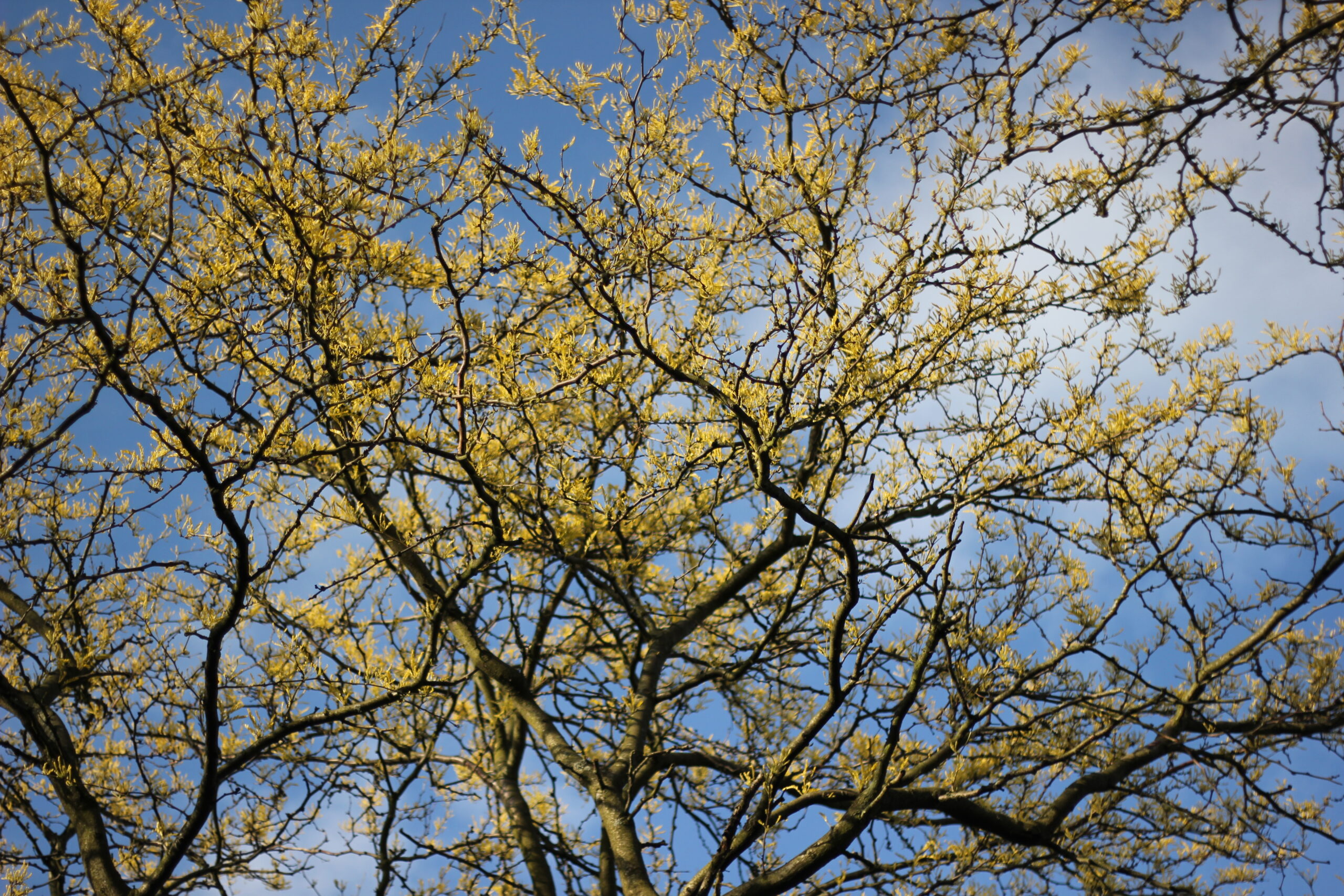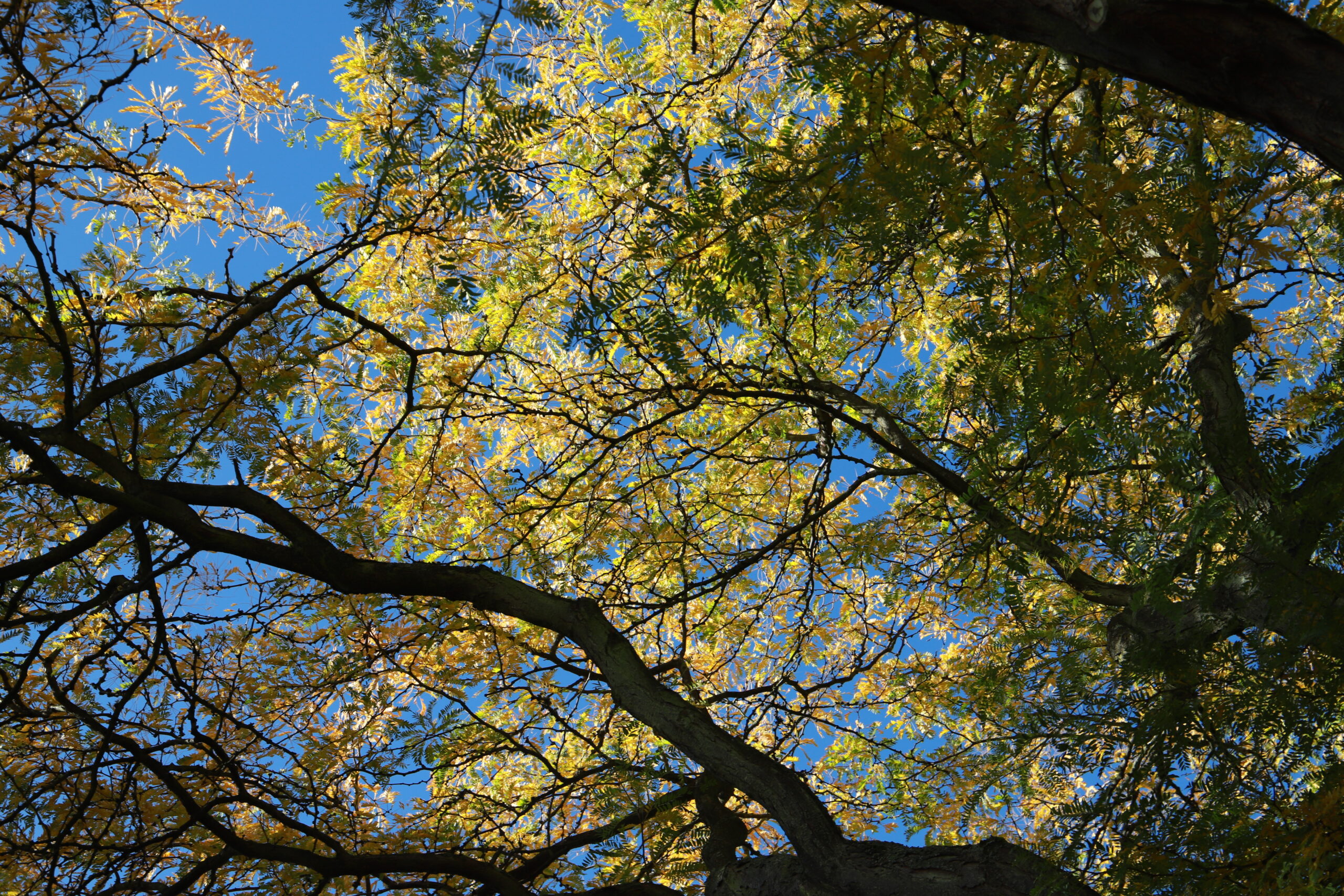There are more than 7,000 trees in Alexandra Park and our resident expert, Stephen Middleton from The Friends of Alexandra Park, is introducing us to some of this favourites.
At the top of the Rose Garden stand two feathery, yellowy trees; our June Tree of the Month, the Honey Locust (Gleditsia triacanthos ‘Sunburst’). These trees are well situated as they like to enjoy full sun and they brighten up the area.
Very large bean-like pods can be seen later in the year and these give a clue to the honey locust being a member of the pea family.
Our tree of the month is native to the eastern United States and was introduced into this country by Henry Compton, Bishop of London, in the late 17th century.
One of the major features of these trees are normally the viscous triple thorns. However, our examples are cultivars (clones) with attractive paler foliage and they are kinder to park visitors as they have no thorns.
The leaves have a feathery appearance as they are subdivided into leaflets. This type of leaf is described as pinnate. Their colour starts off yellow then gradually darkens to green in the summer before turning golden in the autumn.
At this time of the year, the tree has small blooms in separate clusters of male and female flowers. More dramatic are the very large, often slightly twisted, pods about 35cm long which are visible in late autumn and winter.
The honey locust name comes from the fact that it resembles the robina or black black locust (our June 2021 Tree of the Month) and the honey refers to the edible pith between the seeds in the pods.
The scientific name comes from Johann Gleditsch of Berlin Botanic Garden (Gleditsia) and the fact the normal species version of the tree is covered with triple thorns (triancanthos).
The native americans used the pith in the pods as a food and in traditional medicine.
There is another example of this tree just below the Palm Court next to the Cork Oak which produces a greater number of the long pods.
